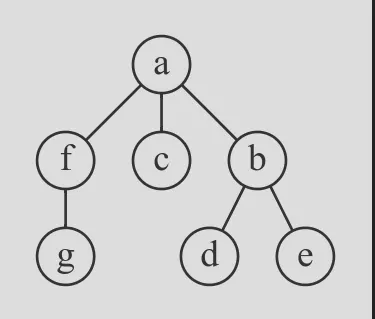August 27, 2024
P70B - Omitted; we can only create well-formed trees.
Multiway Trees
A multiway tree is composed of a root element and a (possibly empty) set of successors which are multiway trees themselves. A multiway tree is never empty. The set of successor trees is sometimes called a forest.
The code to represent these is somewhat simpler than the code for binary trees, partly because we don’t need separate classes for nodes and terminators, and partly because we don’t need the restriction that the value type be ordered.
case class MTree[+T](value: T, children: List[MTree[T]]) {
def this(value: T) = this(value, List())
override def toString = "M(" + value.toString + " {" + children.map(_.toString).mkString(",") + "})"
}
object MTree {
def apply[T](value: T) = new MTree(value, List())
def apply[T](value: T, children: List[MTree[T]]) = new MTree(value, children)
}
The example tree is, thus:
MTree('a', List(MTree('f', List(MTree('g'))), MTree('c'), MTree('b', List(MTree('d'), MTree('e')))))
The starting code skeleton for this section is mtree1.scala.

